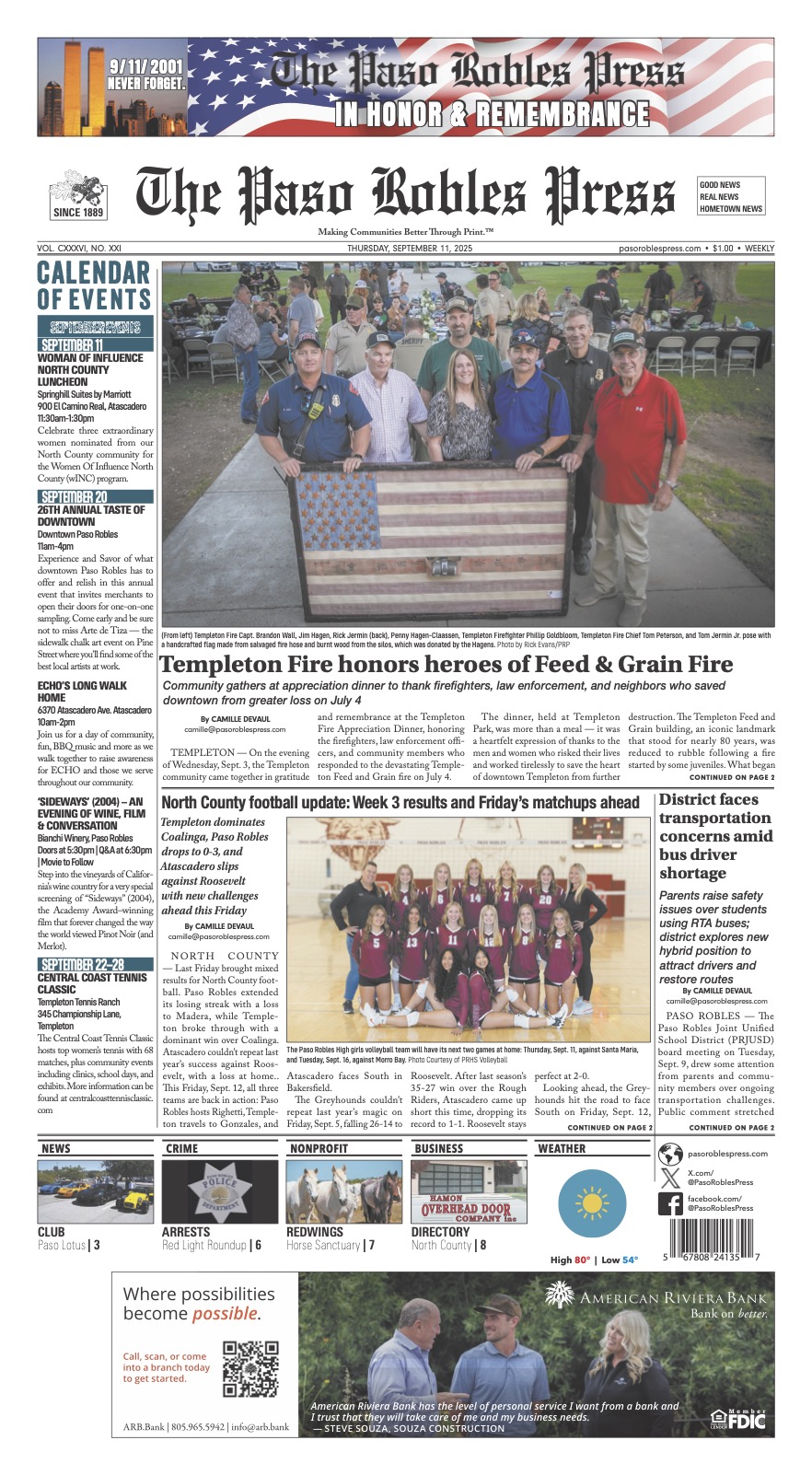Co-founder Brandi DeCarli offers ‘Farm from a box’ as a viable solution to food deficiency
The infrastructural means required for anyone to farm can be limiting and exorbitantly expensive. “Farm from a box” has addressed this with a system that can deliver rapid and ongoing return – all within a standalone, deliverable unit that provides all the parts to establish a two-acre planting operation.
 The daughter of Ron DeCarli, executive director of San Luis Obispo Council of Government (SLOCOG), and wife Susan DeCarli (Paso Robles City Planner), Brandi’s DeCarli’s brainstorm with co-founder Scott Thompson utilizes modified shipping containers to establish crop production and a reliable source of sustained income.
The daughter of Ron DeCarli, executive director of San Luis Obispo Council of Government (SLOCOG), and wife Susan DeCarli (Paso Robles City Planner), Brandi’s DeCarli’s brainstorm with co-founder Scott Thompson utilizes modified shipping containers to establish crop production and a reliable source of sustained income.
As DeCarli described the sensibility of her Farm from a box product, her passion was palpable.
“There’s little need for tomatoes to travel 1,500 miles from farm to plate,” said DeCarli. “We designed Farm from a box as a scalable agricultural infrastructure to modernize community-driven farming in a sustainable way. By empowering people to grow and sustain food production at the community level, we work to build greater resilience to climate shocks, boost livelihoods, and help increase the healthy food that is locally available.”
“Farm from a box is a unique concept – it is the Swiss Army knife of farming,” said Ganesan Srinivasan, Dean of Santa Rosa Junior College. “It comes with its own solar power panel that generates enough power that is required for taking care of the farming operations. It has got its own water, filter, etc. The farmer will be able to do almost all the things that are needed, required, for farming two to four acres.”
Each steel structure puts to use a renewable energy package of basic farm tools, a water-efficient irrigation system, and (Cloud-based) IoT management with WiFi capability, which can be customized to any culture, climate and community.

In an IoT (or “Internet of Things”) system for this application, the amount of energy required for the Farm from a box kit to work is determined, controlled and analyzed in an intelligent way.
In this system, green technology and sustainable farming methods are merged by using remote sensors, geospatial mapping software (or geographical data technology) and off-grid weather systems to provide the most informed, user-friendly, time-sensitive and efficient way for independent farmers to use.
A key aspect of the system is “regenerative agriculture.” This farming and grazing practice functions in an agro-ecological way to rebuild organic matter, restore a degraded soil’s biodiversity and improve the water cycle. Outfitted with smart technologies with renewable energy capability, the 20-foot-long structures can help reduce the need for food aid.
What about cost? A typical Farm from a box unit costs $55,000, similar to what Americans spend for a well-appointed 2018 Ford F-350 truck or similarly configured Dodge, but with renewable energy and better rate of return.

In Tanzania, for example, where DeCarli participated with the United Nations World Food Programme, a previously barren chunk of land was transformed into a verdant cornucopia.
“The before-and-after we saw in Tanzania was tremendous,” said DeCarli. “In America, instead of a vacant lot, we can have a beautiful plot of land that feeds a neighborhood, sources a farm stand or enables a local chef to plant specialty crops.”
DeCarli envisions Food from a box as a useful, hands-on part of a school curriculum, perfect for urban or small community farming, or even restoring mental health. In Alexandria, Virginia, she cited how farming is being used among veterans as a therapeutic means for combatting PTSD while supplying produce for commercial farms.
By localizing food production, DeCarli believes this is a viable way to bridge both traditional and technological worlds.
“Food connects us, and we’ve gotten away from it, but we can get it back,” said DeCarli, whose Italian relatives have traditionally grown their own fruits and vegetables. “California is a great example of this, in that we lead the nation in food production. We are still those pioneers! And we can do it off the grid, cheaper, and more innovatively. It’s the future, but it’s also an anchor that connects us, quite literally, with our roots.”
To learn more, visit farmfromabox.com or “Like” their Farm from a box page on Facebook.











